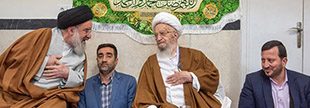The Beirut Port Explosion and the 2020 Crisis
In 2020, Lebanon faced one of its most severe crises in recent history when a massive explosion rocked the Port of Beirut, killing over 200 people, injuring thousands, and leaving large parts of the city in ruins. The explosion, caused by improperly stored ammonium nitrate, led to widespread anger and protests against Lebanon’s political elite, including Hezbollah.
While Hezbollah was not directly blamed for the explosion, the group’s control over parts of the port and its influence within Lebanon’s political system made it a target of public outrage. Nasrallah’s defense of Hezbollah’s role in the country and his dismissal of the protests further alienated many Lebanese, who were frustrated with the country’s chronic corruption, economic collapse, and political dysfunction.
Nasrallah’s Death and Legacy
On September 27, 2024, the Israel Defense Forces (IDF) announced that it had conducted an airstrike targeting Hezbollah’s main headquarters in Beirut, with the goal of assassinating Nasrallah. The next day, it was confirmed that Nasrallah had been killed in the attack, marking the end of his 32-year leadership of Hezbollah.
Nasrallah’s death is a significant moment in the history of Hezbollah and the broader Middle East. Under his leadership, Hezbollah evolved from a small militant group into a powerful political and military force that shaped regional dynamics. His ability to blend military resistance with political strategy allowed Hezbollah to survive and thrive, even in the face of significant challenges.
Nasrallah’s legacy is complex. For many in Lebanon and the broader Arab world, he is seen as a symbol

